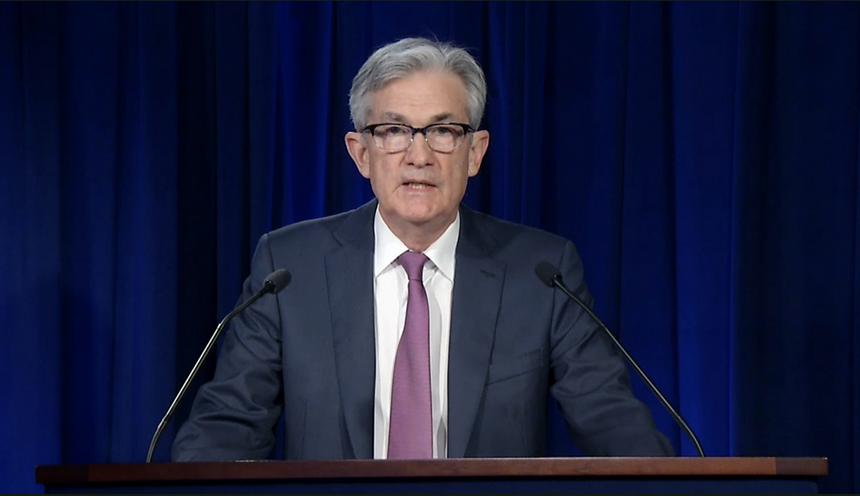Die Bank of England hat soeben entschieden den Leitzins von bei 5,25 zu belassen. Die Markterwartungen zeigten eine Anhebung auf 5,50 %. Die Entscheidung im Notenbankrat fiel mit 5 gegen 4 Stimmen. Daraufhin fällt das Pfund aktuell gegenüber dem US-Dollar von 1,2299 auf 1,2246.
Hier das Statement der Bank of England im Wortlaut: In the MPC’s August most likely, or modal, Monetary Policy Report projections, conditioned on a market-implied path for Bank Rate that averaged just under 5½% over the three-year forecast period, CPI inflation was expected to return to the 2% target by 2025 Q2. It was then projected to fall below the target in the medium term, as an increasing degree of economic slack was expected to reduce domestic inflationary pressures, alongside declining external cost pressures. The Committee had continued to judge that the risks around the modal inflation forecast were skewed to the upside, albeit by less than in May, reflecting the possibility that the second-round effects of external cost shocks on inflation in wages and domestic prices take longer to unwind than they did to emerge. The mean projection for CPI inflation, which incorporated these risks, was 2.0% and 1.9% at the two and three-year horizons respectively.
Since the MPC’s previous meeting, global growth has evolved broadly in line with the August Report projections, albeit with some differences across regions. Spot oil prices have risen significantly, while underlying inflationary pressures have remained elevated across advanced economies.
UK GDP is estimated to have declined by 0.5% in July and the S&P Global/CIPS composite output PMI fell in August, although other business survey indicators remain consistent with positive GDP growth. While some of this news could prove erratic, Bank staff now expect GDP to rise only slightly in 2023 Q3. Underlying growth in the second half of 2023 is also likely to be weaker than expected.
There have been some further signs of a loosening in the labour market, although it remains tight by historical standards. The vacancies-to-unemployment ratio has continued to decline, reflecting both a steady fall in the number of vacancies and rising unemployment. The Labour Force Survey unemployment rate rose to 4.3% in the three months to July, higher than expected in the August Report. Indicators of employment have generally softened against the backdrop of subdued activity.
Annual private sector regular Average Weekly Earnings (AWE) growth increased to 8.1% in the three months to July, 0.8 percentage points above the August Report projection. The recent path of the AWE is, however, difficult to reconcile with other indicators of pay growth. Most of these have tended to be more stable at rates of growth that are elevated but not quite as high as the AWE series.
Twelve-month CPI inflation fell from 7.9% in June to 6.7% in August, 0.4 percentage points below expectations at the time of the Committee’s previous meeting, and triggering the exchange of open letters between the Governor and the Chancellor of the Exchequer that is being published alongside this monetary policy announcement. Core goods CPI inflation has fallen from 6.4% in June to 5.2% in August, much weaker than expected in the August Report. Services CPI inflation rose from 7.2% in June to 7.4% in July but declined to 6.8% in August, 0.3 percentage points lower than expected in the August Report. Some of those movements are linked to services such as airfares and accommodation that tend to be volatile over the summer holiday period. Excluding these travel-related components, services inflation has been more stable at continued high rates, albeit slightly weaker than expected.
CPI inflation is expected to fall significantly further in the near term, reflecting lower annual energy inflation, despite the renewed upward pressure from oil prices, and further declines in food and core goods price inflation. Services price inflation, however, is projected to remain elevated in the near term, with some potential month-to-month volatility.
The MPC’s remit is clear that the inflation target applies at all times, reflecting the primacy of price stability in the UK monetary policy framework. The framework recognises that there will be occasions when inflation will depart from the target as a result of shocks and disturbances. Monetary policy will ensure that CPI inflation returns to the 2% target sustainably in the medium term.
Developments in key indicators of inflation persistence have been mixed, with the recent acceleration in the AWE not apparent in other measures of wages and with some downside news on services inflation. There are increasing signs of some impact of tighter monetary policy on the labour market and on momentum in the real economy more generally. Given the significant increase in Bank Rate since the start of this tightening cycle, the current monetary policy stance is restrictive. At this meeting, the Committee voted to maintain Bank Rate at 5.25%.
The MPC will continue to monitor closely indications of persistent inflationary pressures and resilience in the economy as a whole, including the tightness of labour market conditions and the behaviour of wage growth and services price inflation. Monetary policy will need to be sufficiently restrictive for sufficiently long to return inflation to the 2% target sustainably in the medium term, in line with the Committee’s remit. Further tightening in monetary policy would be required if there were evidence of more persistent inflationary pressures.
The MPC committed in the minutes of its August 2022 meeting to review the reduction in the Asset Purchase Facility annually and, as part of that, to set an amount for the reduction in the stock of purchased UK government bonds over the subsequent 12-month period. At this meeting, the Committee voted to reduce the stock of UK government bond purchases held for monetary policy purposes, and financed by the issuance of central bank reserves, by £100 billion over the period from October 2023 to September 2024, to a total of £658 billion.
Kommentare lesen und schreiben, hier klicken













